Birdfinding.info ⇒ This extremely localized species is naturally confined to an island of approximate sixty square miles (160 km2) and appears to be common throughout its tiny range.
Barbuda Warbler
Setophaga subita
Endemic to Barbuda, where it inhabits the dry, scrubby woodland that covers most of the island.
Identification
Distinctive within its range: gray above, yellow below, with indistinct whitish wingbars and a yellow forehead and markings above and below the eye.
Very similar to Adelaide’s and St. Lucia Warblers, with which it was long considered conspecific.
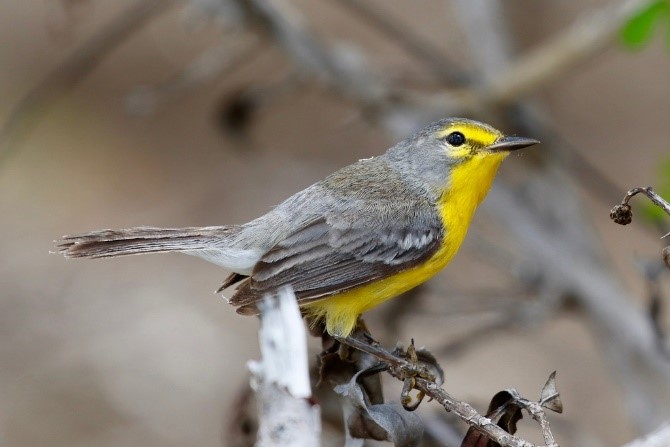
Barbuda Warbler. (Barbuda; April 25, 2018.) © Bird Explorers

Barbuda Warbler. (Barbuda; June 26, 2010.) © Mikko Pyhälä

Barbuda Warbler. © Ted Lee Eubanks
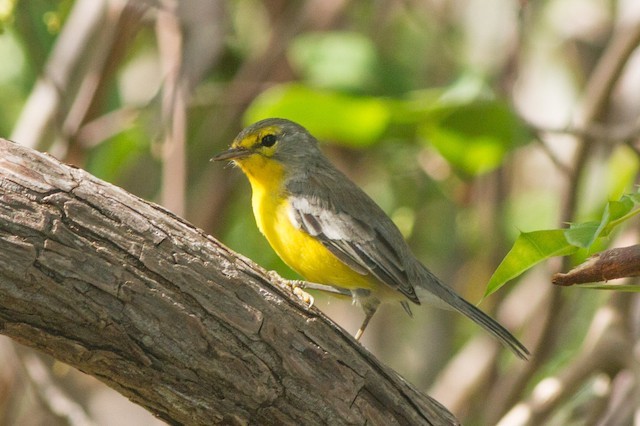
Barbuda Warbler. (Barbuda; October 20, 2017.) © Jeff Gerbracht
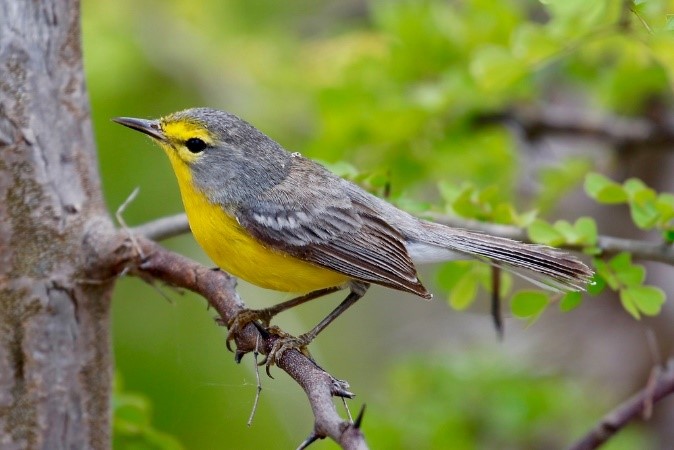
Barbuda Warbler. (Barbuda; April 25, 2018.) © Bird Explorers

Barbuda Warbler. (Barbuda; April 13, 2013.) © Greg Griffith
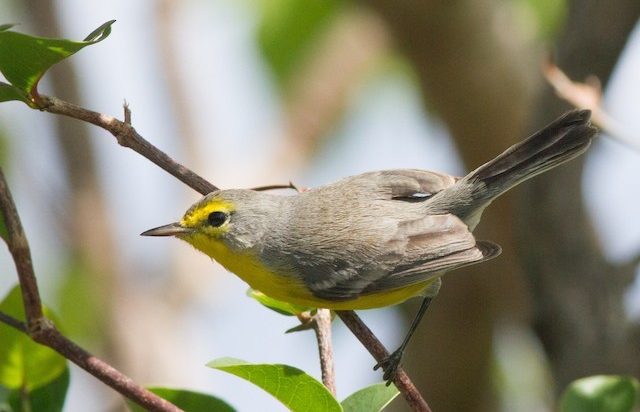
Barbuda Warbler, showing mostly pale-gray upperparts. (Barbuda; October 17, 2017.) © Jeff Gerbracht

Barbuda Warbler, showing mostly pale-gray upperparts. (Barbuda; March 6, 2011.) © Josh Noseworthy

Barbuda Warbler. (Barbuda; June 2017.) © gryllosblog

Barbuda Warbler. (Barbuda; March 29, 2019.) © Jeff Gerbracht
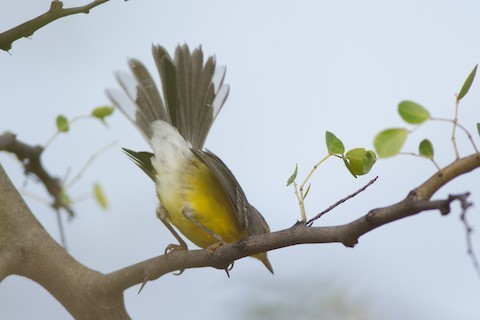
Barbuda Warbler, showing white outer tail corners and vent. (Barbuda; March 29, 2019.) © Jeff Gerbracht

Barbuda Warbler. (Barbuda; June 26, 2010.) © Mikko Pyhala
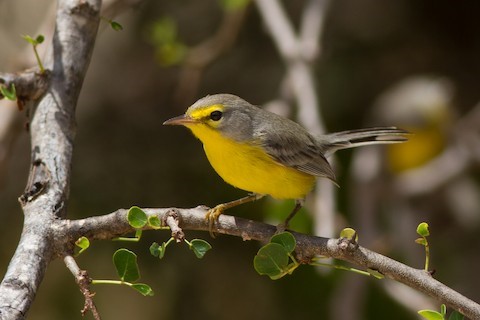
Barbuda Warbler. (Barbuda; March 29, 2019.) © Jeff Gerbracht

Barbuda Warbler. (Barbuda; March 29, 2019.) © Jeff Gerbracht
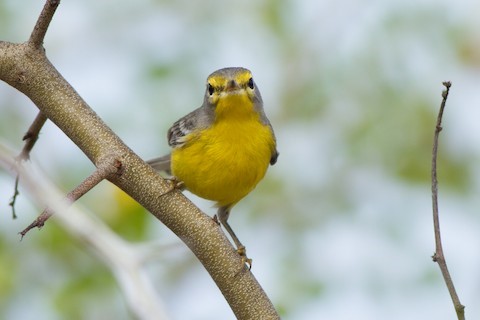
Barbuda Warbler. (Barbuda; March 29, 2019.) © Jeff Gerbracht
Voice. Song consists of three parts: a rich trill, a faster, higher trill, and a series of widely spaced notes:
Cf. Adelaide’s Warbler. Barbuda Warbler strongly resembles female and immature Adelaide’s Warblers. Barbuda differs mainly in that it lacks distinct wingbars, and has slightly browner upperparts, especially on the back. Barbuda’s under-eye crescents are usually all-yellow, but can be white; Adelaide’s’ are usually white, but can be yellow. Barbuda’s song resembles that of Adelaide’s in vocal quality but has more complex phrasing.
Cf. St. Lucia Warbler. St. Lucia and Barbuda Warblers are non-migratory species that occupy small, widely separated ranges, and are thus unlikely to overlap. St. Lucia Warbler is a more vivid version of Barbuda. St. Lucia has essentially the same pattern, but with brighter colors and stronger contrasts, with black markings on its face.
Cf. Prairie Warbler. In its most typical plumages, Prairie Warbler has much more yellow in its face than Barbuda, but immature male Prairies have gray cheeks. Barbuda has gray upperparts and unstreaked sides.
Notes
Monotypic species. Formerly considered conspecific with Adelaide’s and St. Lucia Warblers, collectively Adelaide’s Warbler (S. adelaidae).
IUCN Red List Status: Near Threatened.
References
BirdLife International. 2016. Setophaga subita. The IUCN Red List of Threatened Species 2016: e.T22729426A95014708. http://dx.doi.org/10.2305/IUCN.UK.2016-3.RLTS.T22729426A95014708.en. (Accessed November 10, 2019.)
Curson, J. 2019. Barbuda Warbler (Setophaga subita). In Handbook of the Birds of the World Alive (J. del Hoyo, A. Elliott, J. Sargatal, D.A. Christie, and E. de Juana, eds.). Lynx Edicions, Barcelona. https://www.hbw.com/node/61481. (Accessed November 10, 2019.)
Curson, J., D. Quinn, and D. Beadle. 1994. Warblers of the Americas: An Identification Guide. Houghton Mifflin, Boston.
Diamond, A.W. 2011. Barbuda Warbler (Setophaga subita), version 1.0. In Neotropical Birds Online (T.S. Schulenberg, ed.). Cornell Lab of Ornithology, Ithaca, N.Y. https://doi.org/10.2173/nb.barwar.01.
eBird. 2019. eBird: An online database of bird distribution and abundance. Cornell Lab of Ornithology, Ithaca, N.Y. http://www.ebird.org. (Accessed November 10, 2019.)
Raffaele, H., J. Wiley, O. Garrido, A. Keith, and J. Raffaele. 1998. A Guide to the Birds of the West Indies. Princeton University Press, Princeton, N.J.
